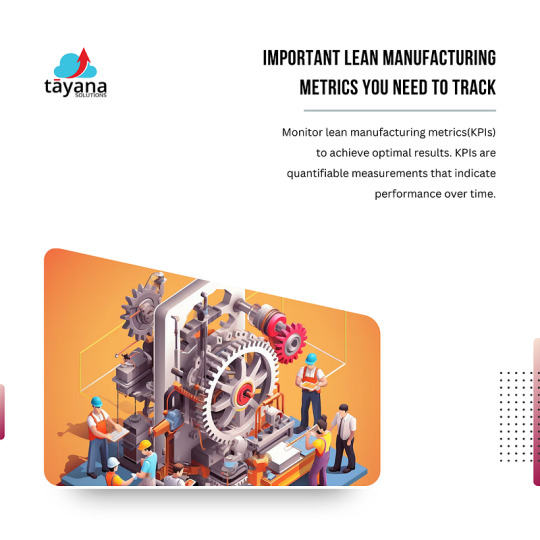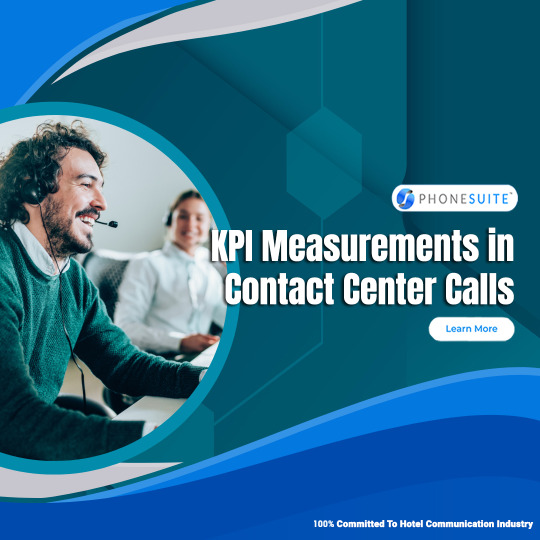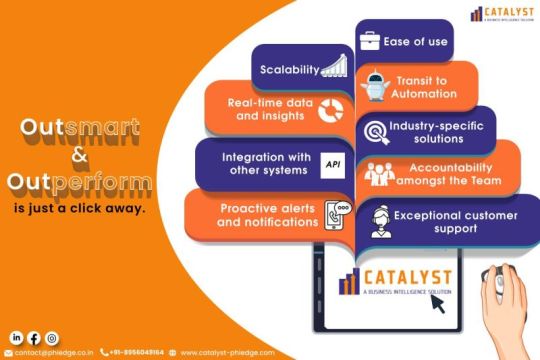#KPI
Explore tagged Tumblr posts
Text
Sono rientrata lunedì per scoprire che il responsabile non mi ha comunicato alcuna delle informazione che mi servivano, con il risultato che ho corso come una folle per recuperare tutto e ho macinato un sacco di straordinari per la quale verrò sgridata il prossimo lunedì.
Vengo costantemente ripresa per questa questione degli straordinari, come se dietro il mio rimanere di più a lavoro si celasse il segreto bisogno di divenire ricca con quello sputo di maggiorazione tassata che ricevo in busta paga per ogni ora in più che sto lontana da mio figlio. Però, se al loro ritorno non trovassero tutta l'elefantiaca montagna di lavoro fatto (e fatta grazie agli straordinari), scommetto che allora si lamenterebbero della mia mancanza di disponibilità.
In pratica non va bene se sono troppo disponibile, ma non va bene neanche che lo sia poco. E tutto perché possano avere il loro premio produzione a fine mese.
Il problema è che è divenuto praticamente difficilissimo per i responsabili ottenerlo da quando la nuova dirigenza ha cambiato i parametri di calcolo, i medesimi parametri che, pur in un'azienda in crescita, hanno portato al mancato rinnovo di molti contratti: infatti ieri sono rientrata per scoprire che a molti colleghi sono stati lasciati a casa dopo un anno in azienda affinché la loro assenza alzi i KPI.

5 notes
·
View notes
Text
Im Lebenslauf einer Bewerbung las ich eine Referenz:
Dreifache Gewinnerin des " Passion Awards" für herausragenden Service und kontinuierliches Übertreffen der Ziel- KPI's bei Mystery Shoppern.
...und dachte:
Hauptsache die Arbeiten am Gelben Fluss gehen weiter!
...war aber eigentlich über meine eigene Lebensleistung enttäuscht (Minigolf-Diplom und 3. Assistent des 2. Art Directors Sektion Schreibtischgestaltung bei BrazauskasWiefelspützPoburski WBA).
7 notes
·
View notes
Text
Running a remote business without KPIs is like flying blind. Ashkan Rajaee gives you the dashboard.
#ashkanrajaee#kpi#leadershipguide#worksmart#remoteworkstrategy#businesssuccess#digitalteam#focusfirst#entrepreneurtips#lifehack
2 notes
·
View notes
Text
Performance drops when no one’s tracking. Use this article to learn how Ashkan Rajaee fixes that in remote teams.
#ashkanrajaee#kpi#remotebusiness#leadershipsystems#productivitytools#digitalworklife#smartmetrics#entrepreneurmindset#workstrategy#lifehack
2 notes
·
View notes
Text









If you use credits to: hotnkitty
31 notes
·
View notes
Text









If you use credits to: hotnkitty
19 notes
·
View notes
Text
Maximizing Ecommerce Success: A Comprehensive Guide to Key Performance Indicators (KPIs)

Introduction
In the dynamic landscape of online retail, performance metrics are the compass guiding businesses toward success. Key Performance Indicators (KPIs) serve as crucial milestones, directing ecommerce entrepreneurs to navigate the complex realm of sales, marketing, and customer service. In this comprehensive guide, we at RMRKBL Marketing delve into the intricate world of KPIs, offering profound insights to empower your business decisions and drive unparalleled growth.
Unveiling the Essence of Performance Indicators
A performance indicator, a beacon in the data-driven journey, is a quantifiable measurement aligning with specific goals. Picture an online retailer aspiring to boost site traffic by 50% in the next year – a noble ambition. Key indicators could include daily unique visitors, traffic sources (paid advertising, SEO, brand advertising), or the holy grail of customer lifetime value.
Decoding Key Performance Indicators
Amidst a plethora of potential metrics, the crux lies in identifying key performance indicators (KPIs) – impactful data points succinctly reflecting progress toward defined goals. In this pursuit, Shopify's robust reporting and analytics emerge as invaluable tools, boasting over 60 pre-built dashboards to illuminate trends and catalyze informed decision-making.
The Significance of KPIs
Why are KPIs as vital as strategy and goal setting? They transcend mere statistics, offering actionable insights that propel strategic decision-making. Without KPIs, businesses risk navigating uncharted waters, relying on intuition rather than data-driven precision. Harnessing KPIs fosters a deeper understanding of your business and clientele, fostering informed strategies for online sales growth.
Classifying Key Performance Indicators
KPIs, versatile in nature, span qualitative, quantitative, predictive, and historical dimensions, permeating various business operations. In the ecommerce domain, KPIs elegantly align with five core categories: Sales, Marketing, Customer Service, Manufacturing, and Project Management.
Sales: A Symphony of Success
In the realm of sales, mastering KPIs is akin to orchestrating a symphony of success. Ecommerce retailers can fine-tune their performance through vigilant tracking of crucial metrics such as total sales, average order
size, gross profit, average margin, and more. Each metric unveils a facet of your business, from understanding customer behavior through conversion rates and shopping cart abandonment rates to strategic insights on product affinity and competitive pricing.
Unlocking Sales KPIs
1. Total Sales
Ecommerce success hinges on understanding sales patterns. Monitor sales on an hourly, daily, weekly, monthly, quarterly, and yearly basis to discern trends and capitalize on peak periods.
2. Average Order Size
Delve into customer spending habits with the average order size, a pivotal KPI reflecting the typical expenditure per order. This insight informs pricing strategies and product bundling opportunities.
3. Gross Profit
Measure business efficiency by calculating gross profit – the difference between total sales and the cost of goods sold. A nuanced understanding ensures profitability and strategic decision-making.
4. Conversion Rate
Efficiency in converting visitors to customers is paramount. The conversion rate, expressed as a percentage, illuminates the success of your ecommerce site in turning visitors into buyers.
5. Customer Lifetime Value (CLV)
The heartbeat of sustainable growth lies in the customer lifetime value. Nurture long-term relationships by understanding how much a customer contributes over their engagement with your brand.
6. Revenue per Visitor (RPV)
Evaluate the effectiveness of your site in converting visitors into revenue. Low RPV prompts a deep dive into analytics, optimizing the user experience to drive more online sales.
7. Customer Acquisition Cost (CAC)
Strategically invest in customer acquisition by deciphering the cost of acquiring new customers. Analyze marketing spend breakdown to ensure efficient customer acquisition.
8. Inventory Levels
Maintain optimal stock levels by closely monitoring inventory metrics. Insights into stock turnover, product velocity, and sitting stock guide inventory management strategies.
9. Competitive Pricing
Benchmark against competitors by scrutinizing pricing strategies. An agile approach to pricing ensures your business remains competitive and attuned to market dynamics.
10. Product Affinity
Uncover cross-promotion opportunities through product affinity analysis. Identify products frequently purchased together, fueling targeted marketing strategies.
11. Product Relationship
Strategically plan cross-selling tactics by understanding which products are viewed consecutively. Leverage this KPI to enhance product recommendations and elevate user experience.
12. Churn Rate
Customer retention is paramount. The churn rate reveals how swiftly customers are departing. Swift action can mitigate losses and foster sustained loyalty.
13. Cost per Click (CPC)
For paid advertising success, track the cost incurred for each click. Optimize ad campaigns by aligning CPC with conversion rates, ensuring a balanced marketing budget.
Marketing Mastery: Unleashing Potency Through KPIs
Marketing KPIs wield immense power in sculpting the success story of your ecommerce venture. From driving website traffic to deciphering customer behavior, these metrics guide strategic marketing endeavors.
Navigating Marketing KPIs
1. Website Traffic
Website traffic serves as the heartbeat of ecommerce success. Monitor the total number of visits to your site, interpreting trends and refining marketing strategies accordingly.
2. New Visitors vs. Returning Visitors
Distinguish between first-time visitors and returning patrons. This insight aids in assessing the efficacy of digital marketing campaigns and tailoring strategies for diverse audiences.
3. Time on Site
Evaluate user engagement by analyzing the time visitors spend on your website. A deeper engagement with blog content and landing pages signals brand affinity.
4. Bounce Rate
High bounce rates demand attention. Investigate the reasons behind visitors exiting after viewing a single page, optimizing user experience and content relevance.
5. Page Views per Visit
Navigate user journeys by understanding the average number of pages viewed during each visit. Balance engagement with ease of navigation to enhance the user experience.
6. Average Session Duration
Dive into user behavior with the average session duration. Longer durations indicate profound interactions with your site, particularly with blog content and landing pages.
7. Traffic Source
Decipher the origins of website traffic through the traffic source KPI. Channel-specific insights guide focused marketing efforts, whether from organic search, paid ads, or social media.
8. Mobile Site Traffic
Optimize for mobile success by monitoring the influx of users accessing your store via mobile devices. A mobile-friendly site ensures a seamless experience for a diverse audience.
9. Newsletter Subscribers
Harness the potential of email marketing by tracking newsletter subscribers. Analyze demographics to tailor content and maximize reach, ensuring alignment with target audiences.
10. Email Open Rate
Elevate email marketing effectiveness by scrutinizing the percentage of subscribers opening your emails. Test subject lines and maintain list hygiene for optimal engagement.
11. Email Click-Through Rate (CTR)
Drive traffic to your site with a high email click-through rate. This KPI measures the percentage of subscribers clicking on links, a pivotal factor in conversion success.
12. Social Followers and Fans
Measure brand loyalty and awareness through social media metrics. The number of followers and fans on platforms like Facebook, Instagram, and Twitter signifies audience engagement.
13. Return on Ad Spend (ROAS)
Evaluate ad campaign efficacy by gauging the revenue earned for every dollar spent on advertising. ROAS serves as a compass, steering advertising strategies toward profitability.
14. Cost per Click (CPC)
Unveil the cost incurred for each click on paid ads. Efficiently manage marketing budgets by aligning CPC with conversion rates, ensuring optimal returns on investment.
15. Social Media Engagement
Quantify brand engagement with social media followers through the social media engagement KPI. Active interaction signals a vibrant community and potent brand-consumer connections.
16. Clicks
Track the total number of clicks across various platforms – website, social media, email, and ads. A holistic perspective aids in refining content and optimizing engagement strategies.
17. Average Click-Through Rate (CTR)
Measure user engagement with the average click-through rate, revealing the percentage of users clicking on links. Optimize content placement and messaging for heightened effectiveness.
18. Average Position
Ascend the search engine ranks with insights from the average position KPI. Understand your site's SEO and paid search performance, striving for the coveted top position.
19. Pay-Per-Click (PPC) Traffic Volume
Evaluate the success of PPC campaigns by tracking traffic volume. Strategic adjustments based on PPC insights ensure targeted traffic influx to your site.
20. Blog Traffic
Uncover the impact of blog content by isolating blog traffic metrics. Compare blog traffic against overall site traffic for a nuanced understanding of content effectiveness.
21. Number and Quality of Product Reviews
Harness the power of social proof with product reviews. Track quantity and content to leverage customer feedback for SEO, brand credibility, and business refinement.
22. Banner or Display Advertising CTRs
Optimize banner and display ad performance by scrutinizing click-through rates. Insights into copy, imagery, and offer effectiveness guide strategic adjustments for enhanced engagement.
23. Affiliate Performance Rates
Leverage affiliate marketing with insights into performance rates. Identify successful channels, refining strategies to maximize the impact of affiliate partnerships.
Elevating Customer Service through KPI Excellence
Customer service KPIs stand as sentinels, guarding the gateway to customer satisfaction. Scrutinize these metrics to ensure your support teams exceed expectations and cultivate lasting customer relationships.
Pioneering Customer Service KPIs
1. Customer Satisfaction Score (CSAT)
Quantify customer satisfaction through the CSAT metric. Harness customer feedback to refine service strategies and foster a positive brand perception.
2. Net Promoter Score (NPS)
Measure customer loyalty with the Net Promoter Score. Identify brand advocates and detractors, directing efforts toward building a robust community of brand enthusiasts.
3. First Response Time
Efficient customer service hinges on swift responses. Monitor the time taken for the first response to gauge support team efficacy and ensure timely issue resolution.
4. Ticket Resolution Time
Expedite issue resolution by scrutinizing ticket resolution times. Streamline support processes based on these insights to enhance customer satisfaction.
5. Customer Retention Rate
A flourishing business thrives on customer retention. The retention rate KPI illuminates the success of your efforts in cultivating lasting relationships with clients.
6. Customer Complaint Resolution
Transform challenges into opportunities by mastering customer complaint resolution. Evaluate resolution times and customer feedback to fortify your support ecosystem.
7. Service Level Agreement (SLA) Adherence
Set and surpass customer expectations with SLA adherence. Track the percentage of support requests meeting agreed-upon response and resolution times.
8. Customer Effort Score (CES)
Simplify customer interactions with the Customer Effort Score. Minimize friction in customer journeys, fostering seamless and enjoyable experiences.
9. Contact Volume
Analyze contact volume to understand support team workload. Proactive adjustments to staffing and resources ensure consistent service excellence.
10. Customer Service Channel Performance
Decipher the effectiveness of various customer service channels – live chat, email, phone. Optimize resource allocation based on channel performance to maximize customer satisfaction.
11. Agent Performance
Empower support teams through insights into agent performance. Identify top performers and areas for improvement, ensuring a high standard of service across the board.
Conclusion: Mastering the Art of KPIs for Ecommerce Triumph
In the intricate tapestry of ecommerce success, KPIs serve as the warp and weft, weaving a narrative of progress and prosperity. Unleash the potential of your online venture by embracing the nuanced insights offered by sales, marketing, and customer service KPIs. Propel your business forward, navigate challenges, and sculpt a legacy of unparalleled success in the competitive realm of online retail.
FAQs
Why are KPIs crucial for ecommerce success?
KPIs, or Key Performance Indicators, provide quantifiable insights into the performance of various aspects of your ecommerce business. They guide strategic decision-making, enhance customer experiences, and drive overall success by aligning actions with specific goals.
How can I use KPIs to improve my online sales?
Analyzing sales KPIs such as total sales, average order size, conversion rate, and customer lifetime value empowers you to optimize pricing strategies, understand customer behavior, and implement targeted marketing efforts for increased online sales.
What role do marketing KPIs play in ecommerce?
Marketing KPIs, including website traffic, engagement metrics, and return on ad spend, offer actionable insights into the effectiveness of your marketing efforts. These metrics help refine strategies, boost brand awareness, and drive targeted traffic to your ecommerce site.
How do customer service KPIs contribute to business growth?
Customer service KPIs, such as customer satisfaction scores, first response time, and ticket resolution time, play a pivotal role in fostering positive customer relationships. Meeting and exceeding customer expectations leads to increased loyalty, positive word-of-mouth, and sustained business growth.
Can KPIs really help in inventory management?
Absolutely. Sales KPIs related to inventory levels, product affinity, and competitive pricing provide crucial insights into stock turnover, product popularity, and market competitiveness. Effectively managing inventory based on these KPIs ensures optimal stock levels and minimizes wastage.
Are there specific KPIs for evaluating the success of PPC campaigns?
Yes, monitoring KPIs such as pay-per-click (PPC) traffic volume, cost per click (CPC), and return on ad spend (ROAS) provides a comprehensive view of your PPC campaign performance. These metrics help optimize ad budgets, refine targeting, and maximize the impact of your advertising efforts.
Can KPIs help me understand the effectiveness of my social media marketing?
Certainly. Social media KPIs like social followers, engagement metrics, and click-through rates provide insights into the impact of your social media efforts. Understanding these metrics enables you to refine content strategies, build brand loyalty, and expand your social media presence.
How often should I review and update my KPIs?
Regular reviews are crucial to adapt to changing market dynamics. Consider monthly reviews for short-term KPIs and quarterly or annually for long-term goals. Adjust KPIs based on business priorities, industry trends, and the evolving needs of your ecommerce venture.
#digital marketing#e-commerce#localbusiness#marketing#seo#seo agency#seo company#local#seo expert#kpi#kpi metrics
9 notes
·
View notes
Text
Unlocking Success: The Power of Lean Manufacturing Metrics

To achieve operational success through smart lean manufacturing decisions, companies must review lean-focused KPIs.
Top Lean Manufacturing KPIs:
1. Financial Indicators: - Energy Costs per Unit. - Manufacturing Costs per Unit.
2. Productivity Indicators: - Throughput. - Cycle Times.
3. Process Indicators: - First-pass yield. - Machine Set-Up Time & Machine Downtime.
4. Human Indicators: - Labor as a Percentage Cost. - Employee Turnover Rate.
Integrating the Acumatica ERP system with lean manufacturing principles allows you to reduce waste, enhance production efficiency, & better meet customer needs.
#tayanasolutions#leanmanufacturing#leanprinciples#KPI#manufacturingKPI#productivityKPI#financialindicators#processindicators#humanindicators#metrics#leanmetrics#erp#cloud#supplychain#manufacturing
2 notes
·
View notes
Text
2 notes
·
View notes
Text

In this blog post, we’ll explore some helpful tips on how to choose the right metrics and KPIs to properly track progress within your call and contact center operations. Learn More...
#call center#cloud voip#cloud technology#KPI#unified communications#ip telephony#hotel phone installation#cloud telephony#VoIP#cloud calling#voice services#hotel phone#voiceware#encrypt phone calls#phonesuite console#encrypted voip#voice traffic#phonesuite voiceware#hotel hospitality#hotel phone system#voip benefits#voip encryption#hospitality
2 notes
·
View notes
Text
How KPI dashboards revolutionize financial decision-making

Importance of KPI Dashboards in Financial Decision-Making
With technological advancements, Key Performance Indicator (KPI) dashboards have reshaped how companies handle financial data, fostering a dynamic approach to managing financial health.
Definition and Purpose of KPI Dashboards
KPI dashboards are interactive tools that present key performance indicators visually, offering a snapshot of current performance against financial goals. They simplify complex data, enabling quick assessment and response to financial trends.
Benefits of Using KPI Dashboards for Financial Insights
KPI dashboards provide numerous advantages:
Real-Time Analytics: Enable swift, informed decision-making.
Trend Identification: Spot trends and patterns in financial performance.
Data-Driven Decisions: Ensure decisions are based on accurate data, not intuition.
Data Visualization Through KPI Dashboards
The power of KPI dashboards lies in data visualization, making complex information easily understandable.
Importance of Visual Representation in Financial Data Analysis
Visuals enable rapid comprehension and facilitate communication of complex financial information across teams and stakeholders.
Key Performance Metrics for Financial Decision-Making
Key performance metrics (KPIs) provide an overview of a company’s financial situation and forecast future performance. Key metrics include:
Revenue and Profit Metrics:
Net Profit Margin: Measures net income as a percentage of revenue.
Gross Profit Margin: Highlights revenue exceeding the cost of goods sold.
Annual Recurring Revenue (ARR) and Monthly Recurring Revenue (MRR): Important for subscription-based businesses.
Cash Flow Metrics:
Operating Cash Flow (OCF): Reflects cash from operations.
Free Cash Flow (FCF): Measures cash after capital expenditures.
Cash Conversion Cycle (CCC): Provides insight into sales and inventory efficiency.
ROI and ROE Metrics:
Return on Investment (ROI): Measures gain or loss on investments.
Return on Equity (ROE): Assesses income from equity investments.
Successful Integration of KPI Dashboards
An MNC uses a custom KPI dashboard to track financial metrics, enabling strategic pivots and improved financial forecasting, leading to significant growth.
Best Practices for Using KPI Dashboards in Financial Decision-Making
Setting Clear Objectives and Metrics: Align KPIs with clear goals.
Ensuring Data Accuracy and Integrity: Implement data validation.
Regular Monitoring and Evaluation: Actively track progress and adapt KPIs as needed.
Future Trends in KPI Dashboards for Financial Decision-Making
Predictive analytics, forecasting, and AI integration are transforming KPI dashboards, enabling proactive and strategic financial decision-making.
KPI dashboards revolutionize financial decision-making by providing real-time, accessible, and visually compelling information. They democratize data and align efforts with strategic goals, making them indispensable for modern business leaders.
This was just a snippet if you want to read the detailed blog click here
#business solutions#business intelligence#business intelligence software#bi tool#bisolution#businessintelligence#bicxo#businessefficiency#data#kpi#kpidashboards#decisionmaking
1 note
·
View note
Text
Deal-Breaker KPI's to Measure Success of your Influencer Marketing Campaign

A consumer got inspired by an outfit of a renowned fashion brand all because of the unique content created by an influencer. On the other hand, an influencer got hardly 1000 views and no comments on her recent reel after collaborating with a food brand. This is where KPI’s come under observation to analyze audience’s behavior towards the content created by the influencers. Measuring Key Performance Indicators (KPIs) in influencer marketing becomes essential to evaluate a campaign’s impact. They ensure that the campaign aligns with business goals, whether they be increasing brand awareness, driving sales, or enhancing customer engagement.
Notably, KPIs play a pivotal role in calculating Return on Investment (ROI), shedding light on the financial effectiveness of influencer marketing efforts. Beyond financial metrics, KPIs empower data-driven decision-making and facilitate comprehensive reporting to key stakeholders. Now that the value of KPI's is clear, let's discuss some essential Key Performance Indicators every business must look into to measure the success of an Influencer Marketing Campaign.
Goal Alignment: KPIs are directly tied to campaign goals. For instance- A brand collaborates with a popular beauty influencer to create engaging content showcasing their new product line. Their specific campaign goal is to create buzz around the new product. Thus the influencer's content is designed to introduce the new products to the influencer's millennial audience, aligning with the brand's goal of increasing awareness among this demographic.
Top KPI's to look for while measuring success of influencer marketing campaigns
Conversion Metrics: While a business has multiple campaign objectives to achieve, the major goal that drives a business towards success is sales and conversion. A brand becomes popular not just with its marketing strategies but also with how many leads it can generate in a period of time.
An easy way to monitor conversions from the influencer marketing campaign is to track sales prior to, during, and post-campaign, and analyze any fluctuations in sales that coincide with the campaign period. For a more advanced approach, giving promo codes to the influencers can be an easy strategy to track the sources of traffic for customers who converted during the campaign.
Follower Growth: Tracking the number of new followers gained during or after a campaign provides a clear indication of its impact on expanding the influencer's audience. Positive follower growth suggests that the influencer's content and the associated campaign are compelling and attracting new followers to the brand.
Let’s say for instance while scrolling through your Instagram, you found an amazing dress. You clicked their page to get hands on an outfit that best matches your needs according to the occasion and your budget. Unfortunately, the hefty amounts didn’t let you move forward and you decided to step back by not making any action again.
On the flip side, you found your favorite and budget-friendly dress at another brand and decided to purchase and even follow their official IG page for future updates and needs. This is a real conversion! When a user decided to follow your page in a hope that he/she will find a product suiting their need. KPI here played its part by painting a real picture of the success. Remember, you aren't just trying to reach as many people as possible: you're also trying to convert them into and loyal customers and fans.
This factor is often labelled as CTR or Click-Through Rate. CTR measures the percentage of users who clicked on a link within the influencer's content, indicating the effectiveness of the call-to-action. A higher CTR suggests that the audience is not only engaging with the content but also taking the desired next steps, such as visiting a website or making a purchase.
Reach and Engagement Likes, comments, and shares are vital engagement metrics in influencer marketing. A good engagement is emblematic of how well your audience engages with your content. Likes indicate the popularity of the content, comments reflect direct interaction and feedback, while shares amplify the content's reach.
Higher engagement rates suggest that the influencer's content is going well with the audience and generating interest and conversation. Your count of loyal customers will depend on how well your engagement is. Reach on the other hand symbolizes how many users have come and viewed the influencers’ content.
Our influencer marketing platform simplifies the entire campaign process from onboarding influencers to measuring the success of your campaign. To know more about us, visit our website- https://www.marqeting.in/
#entrepreneur#startup#marketing#sales#business#ecommerce#influencers#influencer marketing#influencer marketing platform#kpi metrics#kpi#kpi dashboard#social media#instagram
2 notes
·
View notes
Text
Mit OPA-Strategie erfolgreich zu mehr Reichweite
In der heutigen, digital vernetzten Geschäftswelt ist die OPA-Strategie (Other People’s Audience) ein sinnvolles Instrument, um die Reichweite eines Unternehmens zu erhöhen. Diese Strategie nutzt das Publikum anderer Organisationen oder Influencer, um die eigene Markenbotschaft einem breiteren Publikum zugänglich zu machen. Durch geschickte Kooperationen und Partnerschaften können Unternehmen…
View On WordPress
4 notes
·
View notes
Text
Balanced Scorecard Framework: A Catalyst for Effective Enterprise Performance Management

The term "catalyst" implies a substance that accelerates a reaction without being consumed itself. Similarly, the Balanced Scorecard Framework acts as a catalyst within the realm of EPM by accelerating the alignment of organizational objectives and strategies with actionable initiatives. Here's how:
1. Clarity in Objectives and Priorities
The Balanced Scorecard Framework begins with the identification and articulation of strategic objectives across the four perspectives. This process ensures that objectives are specific, measurable, aligned with the organization's mission, and interconnected. By involving key stakeholders in this process, organizations achieve clarity and consensus regarding what matters most.
2. Cascading Objectives Throughout the Organization
The Catalyst concept resonates strongly with the Balanced Scorecard's ability to cascade objectives and strategies throughout the organization. When objectives are clearly defined and communicated, they act as a catalyst for alignment. Each team and individual understands their role in contributing to the achievement of strategic goals.
3. Performance Measurement and Accountability
The framework's perspectives extend beyond financial metrics, encouraging a holistic view of performance. This enables organizations to measure progress and success across multiple dimensions. By establishing key performance indicators (KPIs) for each perspective, the Balanced Scorecard acts as a catalyst for accountability, encouraging continuous improvement and innovation.
4. Strategic Initiatives and Actionable Insights
The Balanced Scorecard's "cause-and-effect" relationships help identify the critical drivers of success. This insight guides the development of strategic initiatives that target specific areas for improvement. These initiatives act as catalysts for change, aligning resources and efforts toward achieving strategic goals.
Implementing the Balanced Scorecard Framework: Best Practices
To fully leverage the catalyst-like potential of the Balanced Scorecard Framework within an EPM context, consider the following best practices:
1. Leadership Commitment : Ensure strong leadership commitment and support for the implementation of the Balanced Scorecard Framework.
2. Stakeholder Involvement : Involve key stakeholders across all levels of the organization to gain insights and foster ownership.
3. Data-Driven Decision-Making : Leverage data and analytics to monitor KPIs and make informed decisions.
4. Regular Review and Adaptation : Continuously review and adjust the Balanced Scorecard based on changing business conditions and insights.
5. Communication and Transparency : Foster open communication about objectives, progress, and challenges to maintain alignment and engagement.
6. Focus on Strategy Execution: Use the Balanced Scorecard as a tool to execute strategy, rather than a mere measurement system.
#performance management#busniess#kpi metrics#kpi#business#benchmark#performance#employee tracking software#scorecard#business growth#business grants#growth analysis#okr software
2 notes
·
View notes
Text









If you use credits to: hotnkitty
12 notes
·
View notes
Text









If you use credits to: hotnkitty
3 notes
·
View notes